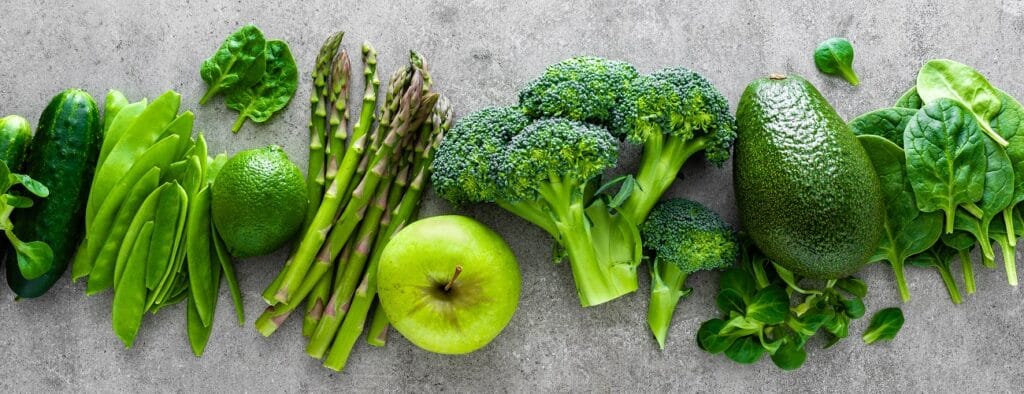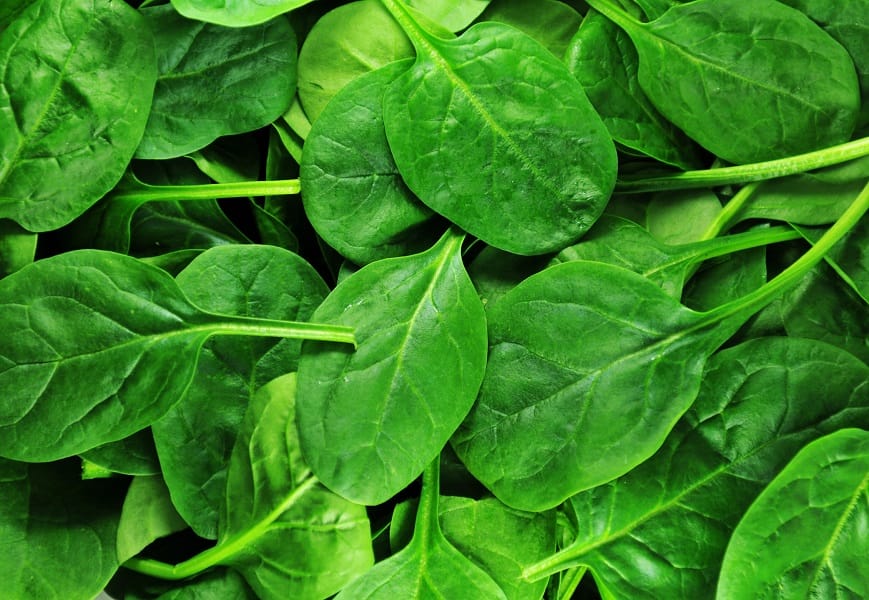In today’s fast-paced world, many people are looking for effective ways to shed those extra pounds and maintain a healthy lifestyle. One of the best ways to achieve this goal is by incorporating green vegetables into your diet. Green vegetables are not only low in calories but also packed with essential nutrients that support weight loss and overall well-being. In this article, we’ll explore the benefits of green vegetables for weight loss, the best green vegetables to include in your diet, and tips on how to make the most of these powerhouse foods.
Why Green Vegetables are Good for Weight Loss
Green vegetables are a staple in many weight loss diets for a reason. They are low in calories and high in fiber, making them an excellent choice for those looking to lose weight. Here’s why green vegetables are so effective:
- Low Caloric Density: Green vegetables have a low caloric density, meaning you can eat a large volume without consuming too many calories. This helps you feel full and satisfied, reducing the likelihood of overeating.
- High in Fiber: Fiber is essential for weight loss as it helps regulate your digestive system, keeps you feeling full for longer periods, and stabilizes blood sugar levels. Many green vegetables are rich in fiber, making them a perfect addition to a weight loss diet.
- Nutrient-Rich: Green vegetables are packed with vitamins, minerals, and antioxidants that support overall health. These nutrients can boost your metabolism, improve digestion, and enhance your body’s ability to burn fat.
- Water Content: Many green vegetables have a high water content, which helps keep you hydrated and contributes to a feeling of fullness without adding extra calories.
- Low in Carbohydrates: Most green vegetables are low in carbohydrates, making them ideal for low-carb and ketogenic diets. This helps reduce insulin spikes and encourages the body to burn fat for energy.
Top Green Vegetables for Weight Loss
Not all green vegetables are created equal when it comes to weight loss. Some are more effective than others due to their nutrient composition and low-calorie content. Here are some of the best green vegetables to include in your weight loss diet:

1. Spinach
- Benefits: Spinach is low in calories and high in vitamins A, C, and K, as well as folate and iron. Its high fiber content helps control hunger and supports healthy digestion.
- How to Use: Add spinach to smoothies, salads, omelets, or sauté it as a side dish.
2. Kale
- Benefits: Kale is one of the most nutrient-dense foods on the planet, providing a significant amount of vitamins A, K, and C, as well as calcium, fiber, and antioxidants. It’s excellent for boosting metabolism and aiding digestion.
- How to Use: Enjoy kale in salads, smoothies, or baked as kale chips.
3.Broccoli
- Benefits: Broccoli is rich in fiber, vitamins C and K, and folate. It’s also high in protein compared to other vegetables, making it a great addition to a weight loss diet.
- How to Use: Steam, roast, or stir-fry broccoli as a side dish or add it to soups and casseroles.
4.Zucchini
- Benefits: Zucchini is low in calories and high in water content, which helps keep you full. It’s also a good source of vitamin C and potassium.
- How to Use: Use zucchini in stir-fries, salads, or as a low-carb pasta alternative (zoodles).
5. Green Beans
- Benefits: Green beans are low in calories and high in fiber, which helps with digestion and keeping you full. They also provide a good amount of vitamins A and C.
- How to Use: Enjoy green beans steamed, sautéed, or in salads and casseroles.
6.Cucumber
- Benefits: Cucumbers are extremely low in calories and high in water content, making them ideal for hydration and weight loss. They also contain antioxidants and small amounts of fiber.
- How to Use: Add cucumber to salads, smoothies, or enjoy it as a refreshing snack.
7. Brussels Sprouts
- Benefits: Brussels sprouts are high in fiber, vitamins C and K, and antioxidants. They help reduce inflammation and support healthy digestion.
- How to Use: Roast, steam, or sauté Brussels sprouts as a side dish or add them to salads.
8.Asparagus
- Benefits: Asparagus is low in calories and high in fiber, vitamins A, C, and K, and folate. It also acts as a natural diuretic, helping to reduce water retention and bloating.
- How to Use: Grill, steam, or roast asparagus as a side dish or add it to salads and omelets.
9. Swiss Chard
- Benefits: Swiss chard is packed with vitamins A, C, and K, as well as magnesium and iron. Its high fiber content supports digestion and keeps you feeling full.
- How to Use: Sauté Swiss chard with garlic and olive oil, or add it to soups and stews.
How to Incorporate Green Vegetables into Your Diet
Incorporating green vegetables into your diet doesn’t have to be difficult or boring. Here are some practical tips to help you add more greens to your meals:
- Start Your Day with a Green Smoothie: Blend spinach, kale, or cucumber with your favorite fruits and a protein source like Greek yogurt or protein powder for a nutritious and filling breakfast.
- Make Salads Your Main Course: Create hearty salads by adding a variety of green vegetables, lean proteins like chicken or tofu, and healthy fats like avocado or nuts.
- Use Greens as Wraps: Swap out tortillas or bread for large leafy greens like collard greens or lettuce. This cuts down on calories and adds more nutrients to your meal.
- Sneak Greens into Soups and Stews: Add spinach, kale, or Swiss chard to soups, stews, and casseroles for an extra nutrient boost.
- Roast or Grill Your Veggies: Roasting or grilling green vegetables like broccoli, Brussels sprouts, and asparagus brings out their natural sweetness and adds a satisfying crunch.
- Make Green Veggie Snacks: Keep sliced cucumber, celery, and green beans in the fridge for a quick and healthy snack. Pair them with hummus or a low-calorie dip for extra flavor.
- Replace Pasta with Zoodles: Use a spiralizer to make zucchini noodles (zoodles) as a low-carb alternative to pasta. Top with your favorite sauce and lean protein.
- Try Green Juices: Green juices made from spinach, kale, cucumber, and celery can be a refreshing way to get your daily dose of greens. Just be mindful of the sugar content if you add fruits.
- Add Greens to Omelets and Scrambles: Incorporate spinach, kale, or Swiss chard into your morning eggs for a nutrient-packed start to your day.
- Experiment with Green Veggie Dips: Make dips like spinach-artichoke dip or avocado-based guacamole, and serve them with raw green veggies for a healthy snack or appetizer.
Benefits of Green Vegetables Beyond Weight Loss
While green vegetables are excellent for weight loss, they offer numerous other health benefits that make them a crucial part of any diet:
- Improved Digestion: The fiber in green vegetables supports healthy digestion by promoting regular bowel movements and preventing constipation.
- Detoxification: Green vegetables, especially those high in chlorophyll like spinach and kale, help detoxify the body by binding to toxins and removing them from the bloodstream.
- Boosted Immunity: Many green vegetables are rich in vitamins A and C, which are essential for a strong immune system. Regular consumption can help reduce the risk of infections and illnesses.
- Bone Health: Green vegetables like kale, spinach, and broccoli are high in calcium and vitamin K, which are crucial for maintaining strong bones and preventing osteoporosis.
- Reduced Risk of Chronic Diseases: The antioxidants and phytochemicals in green vegetables help protect the body from oxidative stress and inflammation, reducing the risk of chronic diseases like heart disease, diabetes, and cancer.
- Better Skin Health: The vitamins and antioxidants in green vegetables support healthy skin by promoting collagen production, reducing inflammation, and protecting against sun damage.
- Enhanced Brain Function: Nutrients like folate, vitamin K, and antioxidants in green vegetables support cognitive function and may reduce the risk of neurodegenerative diseases like Alzheimer’s.
- Hormonal Balance: Cruciferous vegetables like broccoli and Brussels sprouts contain compounds that help balance hormones and support the liver in detoxifying excess estrogen.
Potential Challenges and How to Overcome Them
While green vegetables are undeniably beneficial, some people may find it challenging to incorporate them into their diet regularly. Here are a few common challenges and tips on how to overcome them:
- Taste Preferences: Some people may not enjoy the taste of certain green vegetables. To make them more palatable, try cooking them in different ways, such as roasting or grilling, and adding herbs, spices, or healthy fats like olive oil for flavor.
- Lack of Variety: Eating the same green vegetables every day can become monotonous. To keep things interesting, experiment with different types of green vegetables and try new recipes. You can also mix greens into dishes you already enjoy, such as adding spinach to pasta or kale to a stir-fry.
- Time Constraints: Busy schedules can make it difficult to prepare fresh vegetables. To save time, consider buying pre-washed and pre-cut greens, or preparing your vegetables in bulk at the beginning of the week. Frozen green vegetables are also a convenient option that retains most of their nutrients.
- Digestive Issues: Some people may experience bloating or gas when eating large amounts of green vegetables, especially if they are not used to a high-fiber diet. To avoid discomfort, gradually increase your intake of green vegetables and ensure you are drinking enough water to help your body adjust.
- Cost Concerns: Fresh produce can be expensive, especially if you’re buying organic. To manage costs, buy seasonal vegetables, shop at local farmers’ markets, or consider growing your own green vegetables at home. Frozen vegetables are also a cost-effective alternative.
- Green Vegetables and Popular Diets
- Green vegetables are a versatile and essential component of many popular diets, including:
- Ketogenic Diet: The ketogenic (keto) diet focuses on high-fat, low-carb foods, making many green vegetables, especially leafy greens like spinach and kale, ideal for this diet. These vegetables are low in carbs and can be used in a variety of keto-friendly dishes.
- Paleo Diet: The Paleo diet emphasizes whole, unprocessed foods, and green vegetables fit perfectly within this framework. They provide essential nutrients without the refined sugars and grains that are avoided in this diet.
- Vegan and Vegetarian Diets: Green vegetables are a cornerstone of vegan and vegetarian diets, offering a rich source of essential nutrients like iron, calcium, and vitamin K. They can be used in countless plant-based recipes, from salads to stews.
- Mediterranean Diet: The Mediterranean diet is rich in fruits, vegetables, whole grains, and healthy fats. Green vegetables are frequently used in Mediterranean dishes, such as Greek salads with cucumbers and spinach, or sautéed greens with olive oil and garlic.
- Low-Carb Diets: For those following a low-carb diet, green vegetables are an excellent choice because they are low in carbohydrates and high in fiber. They can be used to replace higher-carb foods, like using zucchini noodles instead of pasta.
- Practical Tips for Buying and Storing Green Vegetables
- To maximize the benefits of green vegetables, it’s important to buy and store them properly. Here are some tips:
- Choose Fresh Produce: Look for green vegetables that are vibrant in color and free from blemishes or wilting. Fresher vegetables will have a higher nutrient content and better taste.
- Store Properly: Most green vegetables should be stored in the refrigerator to maintain freshness. Leafy greens like spinach and kale can be kept in a plastic bag or container with a paper towel to absorb excess moisture.
- Use Quickly: Green vegetables are best consumed within a few days of purchase to ensure you’re getting the most nutrients. If you’re unable to use them quickly, consider freezing them for later use.
- Consider Organic: While organic vegetables are not necessarily more nutritious, they are free from synthetic pesticides and chemicals. If possible, choose organic green vegetables, especially for those with thin skins like spinach and kale.
- Wash Thoroughly: Always wash green vegetables under running water before eating or cooking them. This removes dirt, bacteria, and any residual pesticides.
- Delicious Recipes Featuring Green Vegetables
- Incorporating green vegetables into your diet can be both easy and delicious. Here are a few simple recipes to inspire you:
- Green Smoothie
- Ingredients: 1 cup spinach, 1/2 cucumber, 1/2 banana, 1/2 apple, 1/2 cup Greek yogurt, 1/2 cup water or almond milk, ice cubes.
- Instructions: Blend all ingredients until smooth. Enjoy as a refreshing and nutrient-packed breakfast or snack.
- Kale and Quinoa Salad
- Ingredients: 2 cups kale, chopped; 1 cup cooked quinoa; 1/4 cup dried cranberries; 1/4 cup walnuts; 2 tbsp olive oil; 1 tbsp lemon juice; salt and pepper to taste.
- Instructions: In a large bowl, combine kale, quinoa, cranberries, and walnuts. Drizzle with olive oil and lemon juice, then toss to combine. Season with salt and pepper to taste.
- Garlic Sautéed Green Beans
- Ingredients: 2 cups green beans, trimmed; 2 cloves garlic, minced; 1 tbsp olive oil; salt and pepper to taste.
- Instructions: Heat olive oil in a pan over medium heat. Add garlic and sauté for 1 minute. Add green beans and cook until tender, about 5-7 minutes. Season with salt and pepper.
- Zucchini Noodles with Pesto
- Ingredients: 2 medium zucchinis, spiralized into noodles; 1/4 cup basil pesto; 1/2 cup cherry tomatoes, halved; 2 tbsp Parmesan cheese.
- Instructions: Toss zucchini noodles with pesto until evenly coated. Top with cherry tomatoes and Parmesan cheese. Serve immediately.
- Roasted Brussels Sprouts
- Ingredients: 2 cups Brussels sprouts, halved; 2 tbsp olive oil; salt and pepper to taste.
- Instructions: Preheat oven to 400°F (200°C). Toss Brussels sprouts with olive oil, salt, and pepper. Spread on a baking sheet and roast for 20-25 minutes, or until crispy and browned.
References
- Slavin, J. L. (2005). Dietary fiber and body weight. Nutrition, 21(3), 411-418. doi:10.1016/j.nut.2004.08.018
- Aune, D., Giovannucci, E., Boffetta, P., et al. (2017). Fruit and vegetable intake and the risk of cardiovascular disease, total cancer and all-cause mortality—a systematic review and dose-response meta-analysis of prospective studies. International Journal of Epidemiology, 46(3), 1029-1056. doi:10.1093/ije/dyw319
- Miller, V., Mente, A., Dehghan, M., et al. (2017). Fruit, vegetable, and legume intake, and cardiovascular disease and deaths in 18 countries (PURE): a prospective cohort study. The Lancet, 390(10107), 2037-2049. doi:10.1016/S0140-6736(17)32253-5
- Satija, A., Bhupathiraju, S. N., Rimm, E. B., et al. (2016). Plant-Based Dietary Patterns and Incidence of Type 2 Diabetes in US Men and Women: Results from Three Prospective Cohort Studies. PLoS Medicine, 13(6), e1002039. doi:10.1371/journal.pmed.1002039
- McNaughton, S. A., Mishra, G. D., Stephen, A. M., et al. (2007). Dietary patterns throughout adult life are associated with body mass index, waist circumference, blood pressure, and red cell folate. Journal of Nutrition, 137(1), 99-105. doi:10.1093/jn/137.1.99


